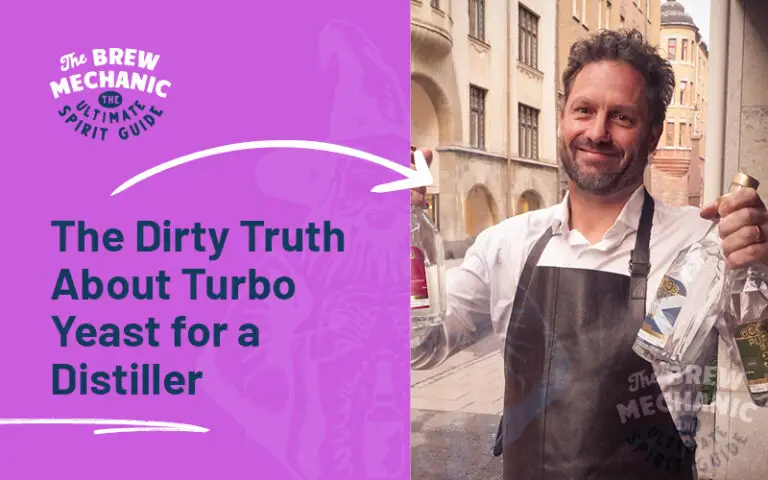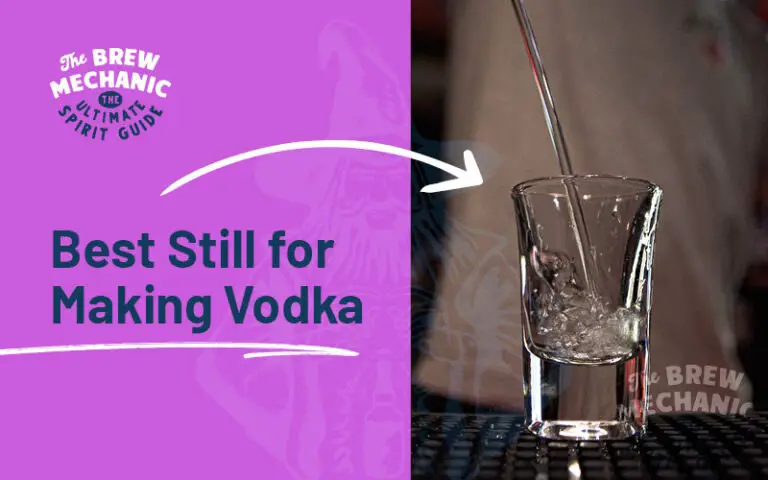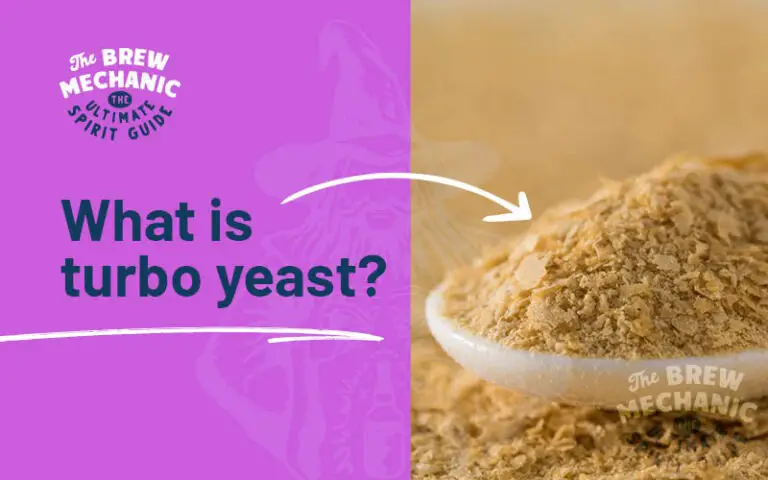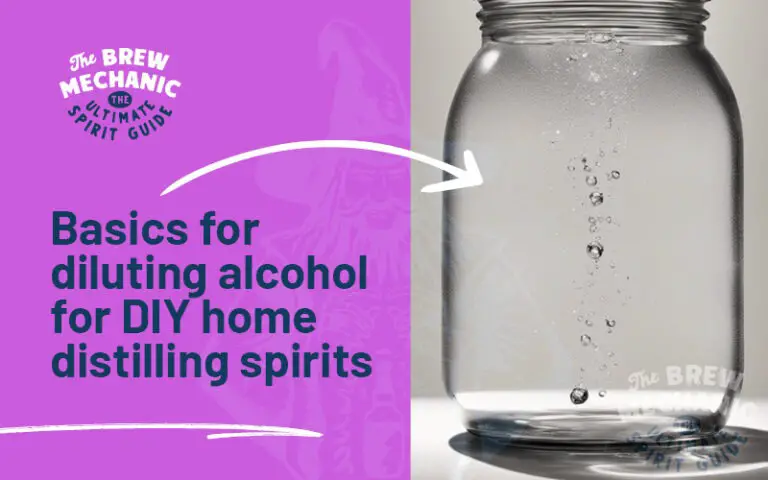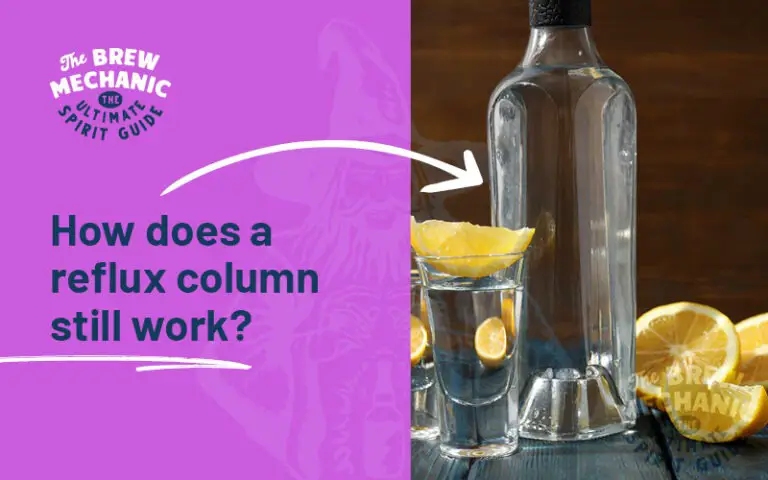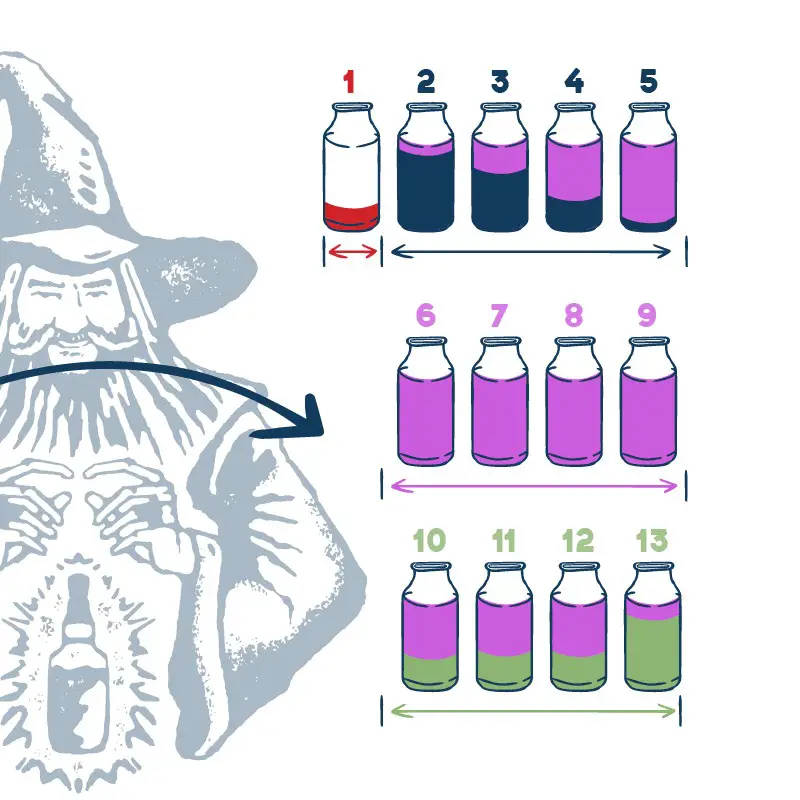Sugar Wash Cuts: Mastering Distillation cuts in Reflux Still Process

Disclaimer: This post might include affiliate links, through which I may earn a small commission without any extra cost to you. Additionally, I am an Amazon Associate and earn from eligible purchases. All the products and services I suggest are ones I have personally used or would use. Thank you very much for your support if you decide to buy through any of my links!
Come join the Distilling Squad!
Get the best fundamental tips & tricks here. Woohoo!
Sugar wash cuts are a crucial aspect of the distillation process for those making alcohol using a reflux still. This method of producing spirits involves separating the different “cuts” of the distillate to ensure a high-quality final product. Understanding the distinctions between foreshots, heads, hearts, and tails during the distillation process is essential for achieving the desired flavor, purity, and alcohol content.
Throughout this process, different compounds present at varying temperatures, resulting in several cuts or fractions. By carefully distinguishing and collecting these cuts, distillers can improve the overall quality and taste of their alcohol while reducing undesirable compounds.
Understanding Sugar Wash
A sugar wash is an essential step in the process of making alcohol through a reflux still. The sugar wash provides a fermentation source of sugar for yeast to convert into alcohol. Yeast plays a vital role in the sugar wash as it converts sugar into alcohol. Selecting an appropriate yeast type, like turbo yeast, guarantees efficient fermentation and higher alcohol yield.
The fermentation is typically complete within 5 to 14 days, depending on factors like yeast type, temperature, and added nutrients. For instance, using turbo yeast can lead to faster fermentation. Once fermentation is complete, the sugar wash is then heated in the reflux still to begin the separation of alcohol and impurities.
Using a Reflux Still for distillation
Simple distillation involves boiling a liquid mixture in a flask or still and then condensing the resulting vapor in a separate container, known as the distillate. This method is particularly effective when the boiling points of the components in the mixture differ significantly.
Stripping Runs
Stripping runs are the initial distillation process that focuses on separating alcohol from the sugar wash in a less refined manner. During this stage, it is important to monitor the output and start to notice the transition between the foreshots, heads, hearts, and tails. These cuts are categorized based on their boiling points and flavors:
Remember to keep a close eye on the temperature and the alcohol’s aroma to determine the transitions between the fractions. After completing the stripping runs, the collected product can undergo a second distillation in the reflux still to further refine and increase the quality of the final alcohol product.
Sugar Wash Cuts: Deep Dive
Understanding Foreshots and heads
Temperature range 56 > 77.5°C (132.8 > 171.5°F)
Foreshots are the first part of the distillate that comes out during the distillation process. They typically contain a high concentration of ethanol, acetone, and other volatile compounds.
It is essential to separate the foreshots from the rest of the batch, as they can negatively impact the taste and smell of the final product. To make good cuts, collect around 100 ml to 200 ml (depending on the size of your batch) of the first distillate in a separate jar and discard it.
Heads: This portion of the distillate contains a high concentration of ethanol but also carries some impurities. The heads are collected after the foreshots, generally in a separate jar, and can be mixed with the next batch of mash to be distilled. I personally discard it as I don’t want to work it through again. Everyone up to their own.
| Acetone | 56.6°C or 133.8°F |
| Methanol | 64°C or 147.2°F |
| Ethyl Acetate | 77.1°C or 170.8°F |
Remember to keep a close eye on the temperature and the alcohol’s aroma to determine the transitions between the fractions. After completing the stripping runs, the collected product can undergo a second distillation in the reflux still to further refine and increase the quality of the final alcohol product.
Identifying Hearts
Temperature range 78.3 > 81.5°C (172.9 > 178.7°F)
This is the desired fraction of the distillate, as it contains a high percentage of ethanol and limited impurities. The hearts are typically collected in a separate container and are utilized to produce the final product.
| Acetone | 56.6°C or 133.8°F |
| Methanol | 64°C or 147.2°F |
| Ethyl Acetate | 77.1°C or 170.8°F |
| Ethanol Range | 78.3 > 81.5°C or 172.9 > 178.7°F |
Separate the tails
Temperature ranges from 82°C (179.6°F) depending on where you live.
The tails are the final part of the distillate that contains a lower ABV (Alcohol by Volume) and more impurities. Much like the heads, tails can be collected separately and added to the next batch for distillation.
| 2 Proponal | 82°C or 179.6°F |
| 1 Proponal | 97°C or 206.6°F |
| Fuesel oils | 94 > 95°C or 201.2 > 203°F |
Temperature ranges for Making Good Sugar wash Cuts
| Acetone | 56.6°C or 133.8°F |
| Methanol | 64°C or 147.2°F |
| Ethyl Acetate | 77.1°C or 170.8°F |
| Ethanol Range | 78.3 > 81.5°C or 172.9 > 178.7°F |
| 2 Proponal | 82°C or 179.6°F |
| 1 Proponal | 97°C or 206.6°F |
| Fuesel oils | 94 > 95°C or 201.2 > 203°F |

Making Good Cuts
Making good cuts is crucial for producing high-quality alcohol in a reflux still. To ensure precise cuts and fractions, the distiller should pay close attention to the factors below:
By taking these factors into consideration, the distiller can ensure accurate cuts and ultimately produce a high-quality alcohol.
Sugar wash cuts Process
In the process of making alcohol using a reflux still, understanding and managing the different stages, such as foreshots, heads, hearts, and tails, is crucial for achieving the best results. With each stage having distinct properties, mastering their separation ensures a high-quality finished product.
Through experience and diligent practice, anyone can learn how to make high-quality alcohol using a reflux still. We understand that paying attention to each stage’s unique characteristics and understanding their significance will lead to a refined and enjoyable finished product.
Download our sugar Wash Cuts Chart here
Yes I want this epic PDF plus get tips and tricks! You will be joining our distilling mail list. 🙂
Last Updated on Oct 29, 2023 by The Brew Mechanic
Disclosure: I may receive affiliate compensation for some of the links below at no cost to you if you decide to purchase a product or service. You can read our affiliate disclosure in our privacy policy. The information provided is for entertainment only.

With 35 years of knowledge of being a chemical engineer in alcohol manufacturing plants, my mission is to teach the next generation of home distilling alcohol brewers at a supernatural speed.
My reviews are based on real-life experiences with reflux stills, sugar wash, troubleshooting and mystical chemical reactions.

